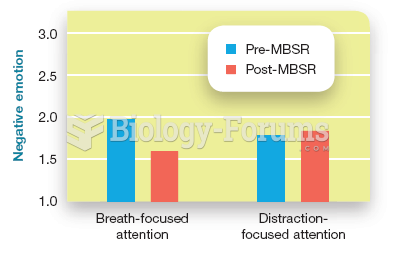Answer to Question 1ANS: Punishment is defined as the application of an aversive stimulus following a response in an effort to decrease the likelihood that the response will recur. Skinner said that punishment was ineffective in changing behavior from undesirable to desirable or from abnormal to normal. Positive reinforcement administered for desirable behaviors is much more effective than punishment. Most operant-conditioning applications involve positive reinforcement rather than punishment. The token-economy patients were not punished for failing to behave appropriately. Instead, they were reinforced when their behavior changed in positive ways.
Skinner stated, What's wrong with punishments is that they work immediately, but give no long-term results. The responses to punishment are either the urge to escape, to counterattack, or a stubborn apathy. These are the bad effects you get in prisons or schools, or wherever punishments are used.
Negative reinforcement is not the same as punishment. It is defined as the strengthening of a response by the removal of an aversive stimulus. A negative reinforcer is an aversive or noxious stimulus, the removal of which is rewarding.
In the laboratory or classroom, an operant-conditioning situation can be established in which the unpleasant stimulus (such as a loud noise or an electric shock) will continue until the subject emits the desired response. As with positive reinforcement, the environment changes as a consequence of the behavior; in this case, the noxious stimulus will disappear.
We can see examples of negative reinforcement in everyday situations. A person may stop smoking to avoid the aversive stimulus of a nagging spouse or colleague. The aversive stimulus (the nagging) should cease when the desirable behavior (not lighting a cigarette in the home or office) is displayed. Skinner opposed using noxious stimuli to modify behavior, noting that the consequences were not as predictable as with positive reinforcement. Also, negative reinforcement does not always work, whereas positive reinforcement is more consistently effective.
Answer to Question 2ANS: Students' answers will vary.
Self-control is defined as the ability to exert control over the variables that determine our behavior.
According to Skinner, behavior is controlled and modified by variables that are external to the organism. Although these external stimuli and reinforcers are responsible for shaping and controlling behavior, we do have the ability to use what Skinner called self-control, which he described as acting to alter the impact of external events. Skinner did not mean acting under the control of some mysterious self.
He suggested that to some extent we can control the external variables that determine our behavior through four self-control techniques:
- Stimulus avoidance
- Self-administered satiation
- Aversive stimulation
- Self-reinforcement
Stimulus avoidance: In stimulus avoidance, for example, if your roommate is too noisy and interferes with your studying for an exam in the morning, you could leave the room and go to the library, removing yourself from an external variable that is affecting your behavior. By avoiding a person or situation that makes you angry, you reduce the control that person or situation has over your behavior.
Self-administered satiation: Through the technique of self-administered satiation, we exert control to cure ourselves of some bad habit by overdoing the behavior. Smokers who want to quit can chain-smoke for a period of time, inhaling until they become so disgusted, uncomfortable, or sick that they quit. This technique has been successful in formal therapeutic programs designed to eliminate smoking.
Aversive stimulation: The aversive stimulation technique of self-control involves unpleasant or repugnant consequences. Obese people who want to lose weight declare their intention to their friends in person or to a larger audience through Facebook or other social networking sites. If they do not keep their resolution, they face the unpleasant consequences of personal failure, embarrassment, and criticism.
Self-reinforcement: In self-reinforcement, we reward ourselves for displaying good or desirable behaviors. A teenager who agrees to strive for a certain grade point average or to take care of a younger brother or sister might reward himself or herself by buying concert tickets or new clothes. To Skinner, then, the crucial point is that external variables shape and control behavior. But sometimes, through our own actions, we can modify the effects of these external forces.







